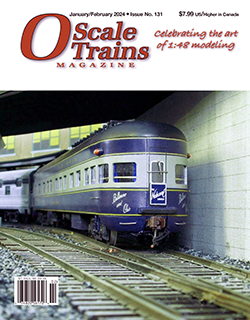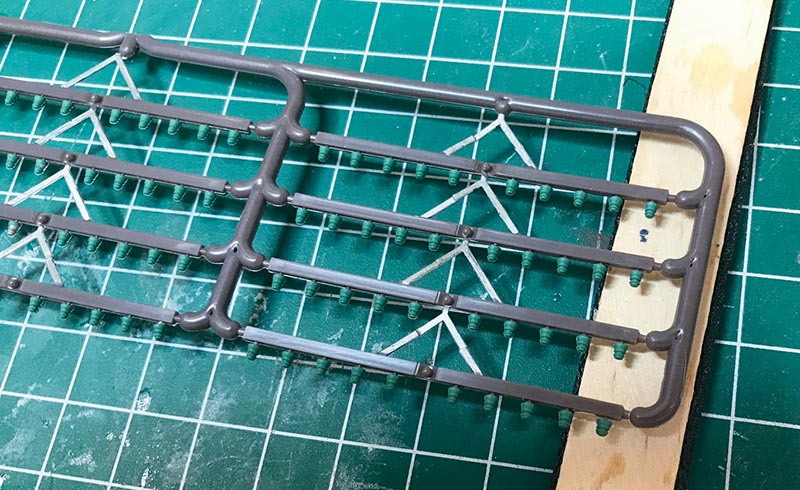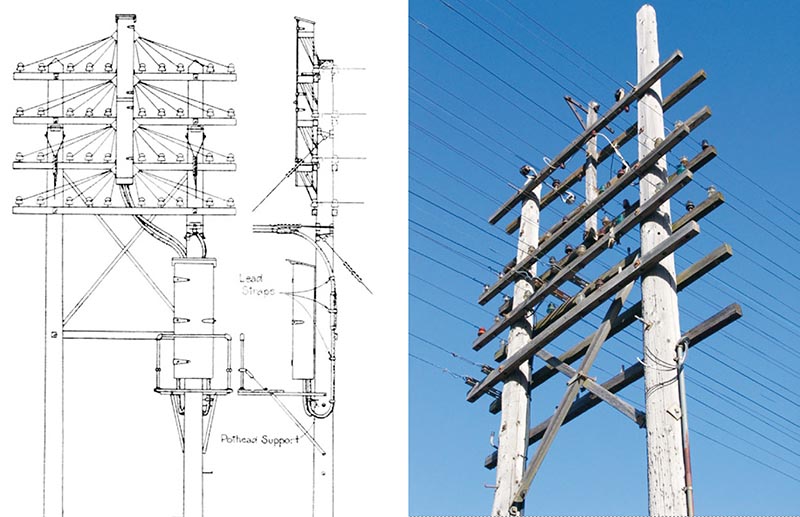 by George Pandelios/photos as noted
by George Pandelios/photos as noted
In my quest — OK, let’s call it what it is — in my obsession with depicting the panhandle, I found myself studying images of the famous bridge across the Ohio River. In the Grif Teller painting as well as a 1925 slide from the John Barriger collection, I saw a strange electrical structure with three vertical poles. I didn’t know what it was, but I did know that it belonged on the layout. And in poking around on the internet, I found several examples of this structure in the YouTube video “Pennsylvania Railroad Steam in Color.”
Conversations with Neal Schorr and Rob Enrico, both notable O scale modelers, provided some very useful background information. I learned that the structure was called an “H” fixture because of its appearance and that it also typically had two upright poles, not three. The purpose of an “H” fixture or end pole, as it was also called, is to terminate communication lines and transfer them into a bundle. That bundle may be suspended across a small creek, ravine, or river between a pair of “H” fixtures on opposite sides. Or if the gap is much larger — like the Ohio River — the bundle may be placed in a conduit and attached to a bridge. On the opposite shore, the wires exit the conduit and resume their places on line poles. But it was an email exchange with Norm Charbonneau, another talented modeler who had actually constructed such a structure, that made me aware of a web-site called The Electric Orphanage. The site is a treasure trove of information about era-specific electrical distribution methods, components, and equipment. It is encyclopedic and contains a section on railway electronic communications in the time frame preceding the wide-spread use of conduits and enclosed wires.

Armed with this knowledge, I decided to build my own “H” fixture. The starting point was obvious; the Weaver line poles I had successfully used in the past (O Scale Trains No. 84, March/April 2016). Interestingly, these poles were originally designed by Neal Schorr and manufactured by Weaver Scale Models for him. Eventually, Neal sold them to Weaver who continued their production. In 2016, Weaver closed their doors and sold the tooling to Atlas. As yet, Atlas has not put these excellent items back into production. Fortunately, I still had a supply of poles left. And I had ordered extra paint for both poles and glass insulators when I bought the set of poles used in that prior article. You can still get these on eBay, although their relative scarcity has driven up the price. They remain, in my humble opinion, the best and most versatile line poles money can buy.
Getting to the construction details, let’s start with the poles themselves. Once you’ve freed them from the sprues and cleaned up any flash with a file, it’s time to decide how many crossarms you’ll need. In my modeling era (early 1950s), line poles on the panhandle had five or sometimes even six crossarms. And because this “H” fixture stood at the edge of a very large river, its crossarms were doubled…


